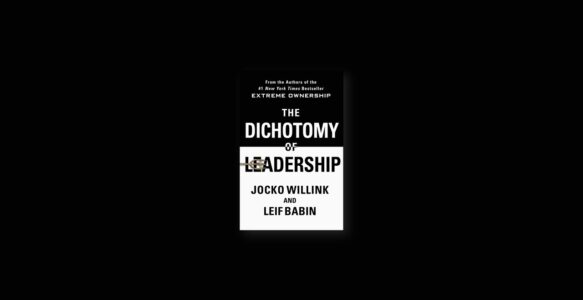True leaders find the balance, not extremism. Sure, they take extreme ownership but they’re not extreme in their attitudes nor actions. They balance the forces that pull them in opposite directions.
Empower, don’t micromanage
A leader must explain the broad goal and the why of the mission. The why allows subordinates to take accountability while giving them enough room to plan the execution. While a leader can’t afford to micromanage, he must set the boundaries with simple, clear and concise directions.
Resolute, don’t overbear
Find the balance between standing firm and enforcing the rules and giving ground and allowing the rules to bend. Leaders should set the high standards for the team to achieve greatness but also, they cannot become overbearing. Know high-stake areas where you must set rigid standards. Explain the ‘why’, benefits and implications of not following them. “Because I said so” is of. Meanwhile, allow some slack in less critical areas for the team to bend the rules.
Don’t focus too much on enforcing trivial polices such as no phone meetings. Instead help the team understand the why and benefits behind the change.
Mentor, don’t fire
Most under-performers don’t need to be fired; they need to be mentored. Only if you’ve made all efforts to help him improve but he failed, consider making a tough call to let him go.
Remember team’s performance trumps individual’s performance. Investing too much on an individual doesn’t mean you’re ignoring the rest.
Train hard, and smart
Training too easy doesn’t stretch the capabilities of the participants while training excessively diminished the lessons they could reap. Make sure the training is
- Realistic
- Focus on the fundamentals
- Be repetitive
There’s no growth in in the comfort zone. Every leader must be humble or get humbled.
Be aggressive, don’t be reckless
Problems aren’t going to solve themselves – a leader must be aggressive on implementing solutions. However, it must be balanced with logic and entailed analysis of risk versus reward.
Default aggressive attitude pushes teams to test, solve problems and capitalize on opportunities.
Be disciplined, don’t be rigid
SOPs are powerful, proven, reputable processes and methodologies that help teams adapt and improve. However, they’re not fixed and inflexible laws. They’re merely guidelines to deviate from, especially when acting with adaptability and common sense.
Following too closely on customer service handbook might hinder the chance to form a real, long-term relationship with the customers.
Be Accountable, don’t Hold Their Hands
Sure, with 100% oversight leaders can achieve success in execution. The only problem is we can never oversee 100%. As operations grow and become more complicated, you won’t be able to inspect everything, and things will eventually spiral out of control. Hold your team accountable by educating them the ‘why’ of the mission and let them perform with their own intrinsic drive.
Leaders help employees understand why certain seemingly trivial actions (like logging a simple entry) helps the company’s long-term growth and eventually their own personal success (and paycheck).
Be a Leader, and a Follower
An effective leader follows in the eyes of the team and accepts one can never have all the answers. Leaning on the expertise and idea of others is indispensable part of leadership.
A great follower takes ownership and builds trust with their boss.
Plan, don’t over plan
Planning mitigates risks and not planning for likely contingencies sets the team up for failure. Over planning, on the other hand, is equally if not more detrimental. It detracts the team and slows them down.
The most effective teams build flexible plans with at most 3 most probable contingencies and a worst-case scenario.
Be Humble, not passive
Check your ego, accept constructive criticism and take ownership of your mistakes. Understand the importance of strategic direction from your boss and accept you don’t have it all figured out. But don’t go overboard that you remain silent when a strategic direction will almost certainly endanger your team mission.
Know when to hold your ground and know when to push back. Encourage people to voice their opinions and address their concerns.
Be focused, not detached
While a leader must not become overwhelmed by the minor details, he also must not be too detached to lose control and fail the mission. Effective leaders are detached enough to see the bigger picture but also attentive to what’s going on in the front line.
When you’re stuck making phone calls, responding to emails and dealing with insurgencies, consider blocking time so you can detach and reinforce what your priorities are.


